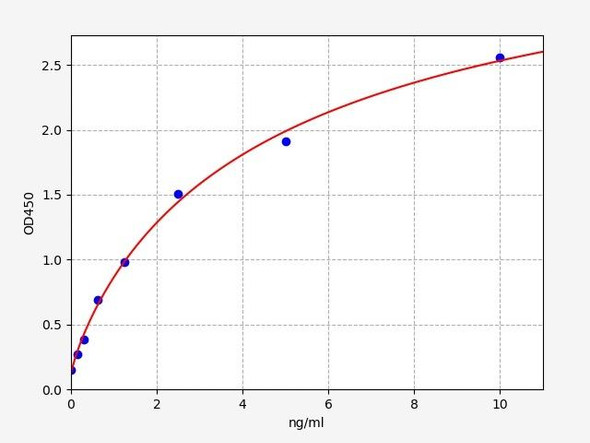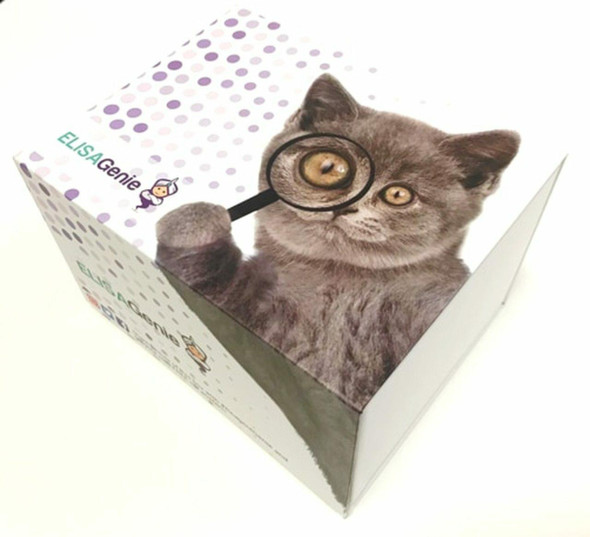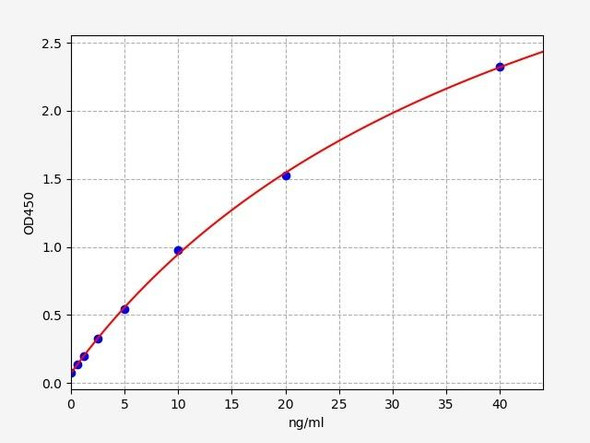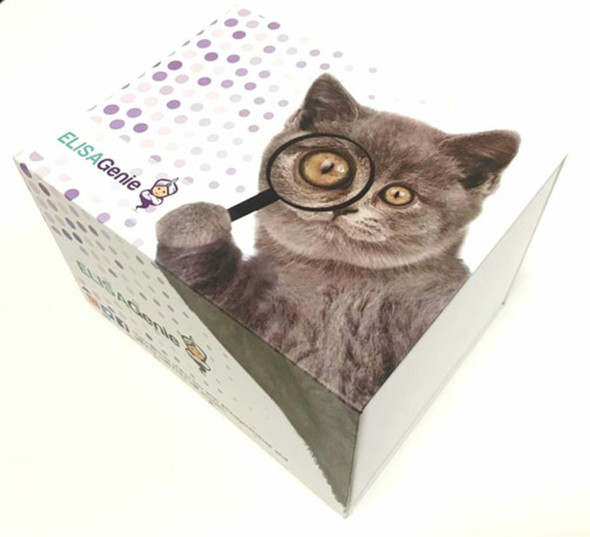Description
Human ANTXR1 (Anthrax toxin receptor 1) ELISA Kit
The Human ANTXR1 (Anthrax Toxin Receptor 1) ELISA Kit is a powerful tool for the precise measurement of ANTXR1 levels in human samples such as serum, plasma, and cell culture supernatants. This kit offers exceptional sensitivity and specificity, ensuring accurate and reproducible results for a variety of research applications.ANTXR1, also known as anthrax toxin receptor 1, is a critical protein involved in the cellular response to anthrax toxin. Understanding ANTXR1 levels is essential for studying the mechanisms of anthrax infection and developing effective treatments.
This ELISA kit provides researchers with a valuable tool for investigating ANTXR1 biology and its role in anthrax pathogenesis.With its high-quality components and user-friendly protocol, the Human ANTXR1 ELISA Kit is an essential resource for scientists working in the fields of infectious diseases, microbiology, and immunology. Trust in this kit to deliver accurate results and advance your research efforts in anthrax toxin receptor biology.
| Product Name: | Human ANTXR1 (Anthrax toxin receptor 1) ELISA Kit |
| Product Code: | HUFI05453 |
| Size: | 96 Assays |
| Alias: | anthrax toxin receptor 1 ELISA Kit, ANTXR1 ELISA Kit, ATR ELISA Kit, TEM8 ELISA Kit, Tumor endothelial marker 8 ELISA Kit |
| Detection method: | Sandwich ELISA, Double Antibody |
| Application: | This immunoassay kit allows for the in vitro quantitative determination of Human ANTXR1 (Anthrax toxin receptor 1) concentrations in serum plasma and other biological fluids. |
| Sensitivity: | < 0.094ng/ml |
| Range: | 0.156-10ng/ml |
| Storage: | 4°C for 6 months |
| Note: | For Research Use Only |
| Recovery: | Matrices listed below were spiked with certain level of Human ANTXR1 (Anthrax toxin receptor 1) and the recovery rates were calculated by comparing the measured value to the expected amount of Human ANTXR1 (Anthrax toxin receptor 1) in samples. Enquire for more information. |
| Linearity: | The linearity of the kit was assayed by testing samples spiked with appropriate concentration of Human ANTXR1 (Anthrax toxin receptor 1) and their serial dilutions. The results were demonstrated by the percentage of calculated concentration to the expected. Enquire for more information. |
| CV(%): | Intra-Assay: CV<8% Inter-Assay: CV<10% |
| Component | Quantity | Storage |
| ELISA Microplate (Dismountable) | 8×12 strips | 4°C for 6 months |
| Lyophilized Standard | 2 | 4°C/-20°C |
| Sample/Standard Dilution Buffer | 20ml | 4°C |
| Biotin-labeled Antibody(Concentrated) | 120ul | 4°C (Protect from light) |
| Antibody Dilution Buffer | 10ml | 4°C |
| HRP-Streptavidin Conjugate(SABC) | 120ul | 4°C (Protect from light) |
| SABC Dilution Buffer | 10ml | 4°C |
| TMB Substrate | 10ml | 4°C (Protect from light) |
| Stop Solution | 10ml | 4°C |
| Wash Buffer(25X) | 30ml | 4°C |
| Plate Sealer | 5 | - |
Other materials and equipment required:
- Microplate reader with 450 nm wavelength filter
- Multichannel Pipette, Pipette, microcentrifuge tubes and disposable pipette tips
- Incubator
- Deionized or distilled water
- Absorbent paper
- Buffer resevoir
| UniProt Protein Function: | ANTXR1: Plays a role in cell attachment and migration. Interacts with extracellular matrix proteins and with the actin cytoskeleton. Mediates adhesion of cells to type 1 collagen and gelatin, reorganization of the actin cytoskeleton and promotes cell spreading. Plays a role in the angiogenic response of cultured umbilical vein endothelial cells. Defects in ANTXR1 are associated with susceptibility to hemangioma capillary infantile (HCI). HCI are benign, highly proliferative lesions involving aberrant localized growth of capillary endothelium. They are the most common tumor of infancy, occurring in up to 10% of all births. Hemangiomas tend to appear shortly after birth and show rapid neonatal growth for up to 12 months characterized by endothelial hypercellularity and increased numbers of mast cells. This phase is followed by slow involution at a rate of about 10% per year and replacement by fibrofatty stroma. Belongs to the ATR family. 4 isoforms of the human protein are produced by alternative splicing. |
| UniProt Protein Details: | Protein type:Membrane protein, integral; Actin-binding; Receptor, misc. Chromosomal Location of Human Ortholog: 2p13.1 Cellular Component: filopodium membrane; cell surface; plasma membrane; integral to membrane; endosome membrane Molecular Function:collagen binding; actin filament binding; protein binding; transmembrane receptor activity; metal ion binding Biological Process: actin cytoskeleton reorganization; reproductive process; pathogenesis; signal transduction Disease: Gapo Syndrome; Hemangioma, Capillary Infantile |
| NCBI Summary: | This gene encodes a type I transmembrane protein and is a tumor-specific endothelial marker that has been implicated in colorectal cancer. The encoded protein has been shown to also be a docking protein or receptor for Bacillus anthracis toxin, the causative agent of the disease, anthrax. The binding of the protective antigen (PA) component, of the tripartite anthrax toxin, to this receptor protein mediates delivery of toxin components to the cytosol of cells. Once inside the cell, the other two components of anthrax toxin, edema factor (EF) and lethal factor (LF) disrupt normal cellular processes. Three alternatively spliced variants that encode different protein isoforms have been described. [provided by RefSeq, Oct 2008] |
| UniProt Code: | Q9H6X2 |
| NCBI GenInfo Identifier: | 17366074 |
| NCBI Gene ID: | 84168 |
| NCBI Accession: | Q9H6X2.2 |
| UniProt Secondary Accession: | Q9H6X2,Q4ZFV6, Q53QD8, Q96P02, Q9NVP3, A8K7U8, J7K7G4 J7KF88, |
| UniProt Related Accession: | Q9H6X2 |
| Molecular Weight: | 564 |
| NCBI Full Name: | Anthrax toxin receptor 1 |
| NCBI Synonym Full Names: | anthrax toxin receptor 1 |
| NCBI Official Symbol: | ANTXR1 |
| NCBI Official Synonym Symbols: | ATR; GAPO; TEM8 |
| NCBI Protein Information: | anthrax toxin receptor 1; 2310008J16Rik; 2810405N18Rik; tumor endothelial marker 8 |
| UniProt Protein Name: | Anthrax toxin receptor 1 |
| UniProt Synonym Protein Names: | Tumor endothelial marker 8 |
| Protein Family: | Anthrax toxin receptor |
| UniProt Gene Name: | ANTXR1 |
| UniProt Entry Name: | ANTR1_HUMAN |
*Note: Protocols are specific to each batch/lot. For the correct instructions please follow the protocol included in your kit.
Before adding to wells, equilibrate the SABC working solution and TMB substrate for at least 30 min at 37 °C. When diluting samples and reagents, they must be mixed completely and evenly. It is recommended to plot a standard curve for each test.
| Step | Protocol |
| 1. | Set standard, test sample and control (zero) wells on the pre-coated plate respectively, and then, record their positions. It is recommended to measure each standard and sample in duplicate. Wash plate 2 times before adding standard, sample and control (zero) wells! |
| 2. | Aliquot 0.1ml standard solutions into the standard wells. |
| 3. | Add 0.1 ml of Sample / Standard dilution buffer into the control (zero) well. |
| 4. | Add 0.1 ml of properly diluted sample ( Human serum, plasma, tissue homogenates and other biological fluids.) into test sample wells. |
| 5. | Seal the plate with a cover and incubate at 37 °C for 90 min. |
| 6. | Remove the cover and discard the plate content, clap the plate on the absorbent filter papers or other absorbent material. Do NOT let the wells completely dry at any time. Wash plate X2. |
| 7. | Add 0.1 ml of Biotin- detection antibody working solution into the above wells (standard, test sample & zero wells). Add the solution at the bottom of each well without touching the side wall. |
| 8. | Seal the plate with a cover and incubate at 37 °C for 60 min. |
| 9. | Remove the cover, and wash plate 3 times with Wash buffer. Let wash buffer rest in wells for 1 min between each wash. |
| 10. | Add 0.1 ml of SABC working solution into each well, cover the plate and incubate at 37 °C for 30 min. |
| 11. | Remove the cover and wash plate 5 times with Wash buffer, and each time let the wash buffer stay in the wells for 1-2 min. |
| 12. | Add 90 µL of TMB substrate into each well, cover the plate and incubate at 37 °C in dark within 10-20 min. (Note: This incubation time is for reference use only, the optimal time should be determined by end user.) And the shades of blue can be seen in the first 3-4 wells (with most concentrated standard solutions), the other wells show no obvious color. |
| 13. | Add 50 µL of Stop solution into each well and mix thoroughly. The color changes into yellow immediately. |
| 14. | Read the O.D. absorbance at 450 nm in a microplate reader immediately after adding the stop solution. |
When carrying out an ELISA assay it is important to prepare your samples in order to achieve the best possible results. Below we have a list of procedures for the preparation of samples for different sample types.
| Sample Type | Protocol |
| Serum | If using serum separator tubes, allow samples to clot for 30 minutes at room temperature. Centrifuge for 10 minutes at 1,000x g. Collect the serum fraction and assay promptly or aliquot and store the samples at -80°C. Avoid multiple freeze-thaw cycles. If serum separator tubes are not being used, allow samples to clot overnight at 2-8°C. Centrifuge for 10 minutes at 1,000x g. Remove serum and assay promptly or aliquot and store the samples at -80°C. Avoid multiple freeze-thaw cycles. |
| Plasma | Collect plasma using EDTA or heparin as an anticoagulant. Centrifuge samples at 4°C for 15 mins at 1000 × g within 30 mins of collection. Collect the plasma fraction and assay promptly or aliquot and store the samples at -80°C. Avoid multiple freeze-thaw cycles. Note: Over haemolysed samples are not suitable for use with this kit. |
| Urine & Cerebrospinal Fluid | Collect the urine (mid-stream) in a sterile container, centrifuge for 20 mins at 2000-3000 rpm. Remove supernatant and assay immediately. If any precipitation is detected, repeat the centrifugation step. A similar protocol can be used for cerebrospinal fluid. |
| Cell culture supernatant | Collect the cell culture media by pipette, followed by centrifugation at 4°C for 20 mins at 1500 rpm. Collect the clear supernatant and assay immediately. |
| Cell lysates | Solubilize cells in lysis buffer and allow to sit on ice for 30 minutes. Centrifuge tubes at 14,000 x g for 5 minutes to remove insoluble material. Aliquot the supernatant into a new tube and discard the remaining whole cell extract. Quantify total protein concentration using a total protein assay. Assay immediately or aliquot and store at ≤ -20 °C. |
| Tissue homogenates | The preparation of tissue homogenates will vary depending upon tissue type. Rinse tissue with 1X PBS to remove excess blood & homogenize in 20ml of 1X PBS (including protease inhibitors) and store overnight at ≤ -20°C. Two freeze-thaw cycles are required to break the cell membranes. To further disrupt the cell membranes you can sonicate the samples. Centrifuge homogenates for 5 mins at 5000xg. Remove the supernatant and assay immediately or aliquot and store at -20°C or -80°C. |
| Tissue lysates | Rinse tissue with PBS, cut into 1-2 mm pieces, and homogenize with a tissue homogenizer in PBS. Add an equal volume of RIPA buffer containing protease inhibitors and lyse tissues at room temperature for 30 minutes with gentle agitation. Centrifuge to remove debris. Quantify total protein concentration using a total protein assay. Assay immediately or aliquot and store at ≤ -20 °C. |
| Breast Milk | Collect milk samples and centrifuge at 10,000 x g for 60 min at 4°C. Aliquot the supernatant and assay. For long term use, store samples at -80°C. Minimize freeze/thaw cycles. |









